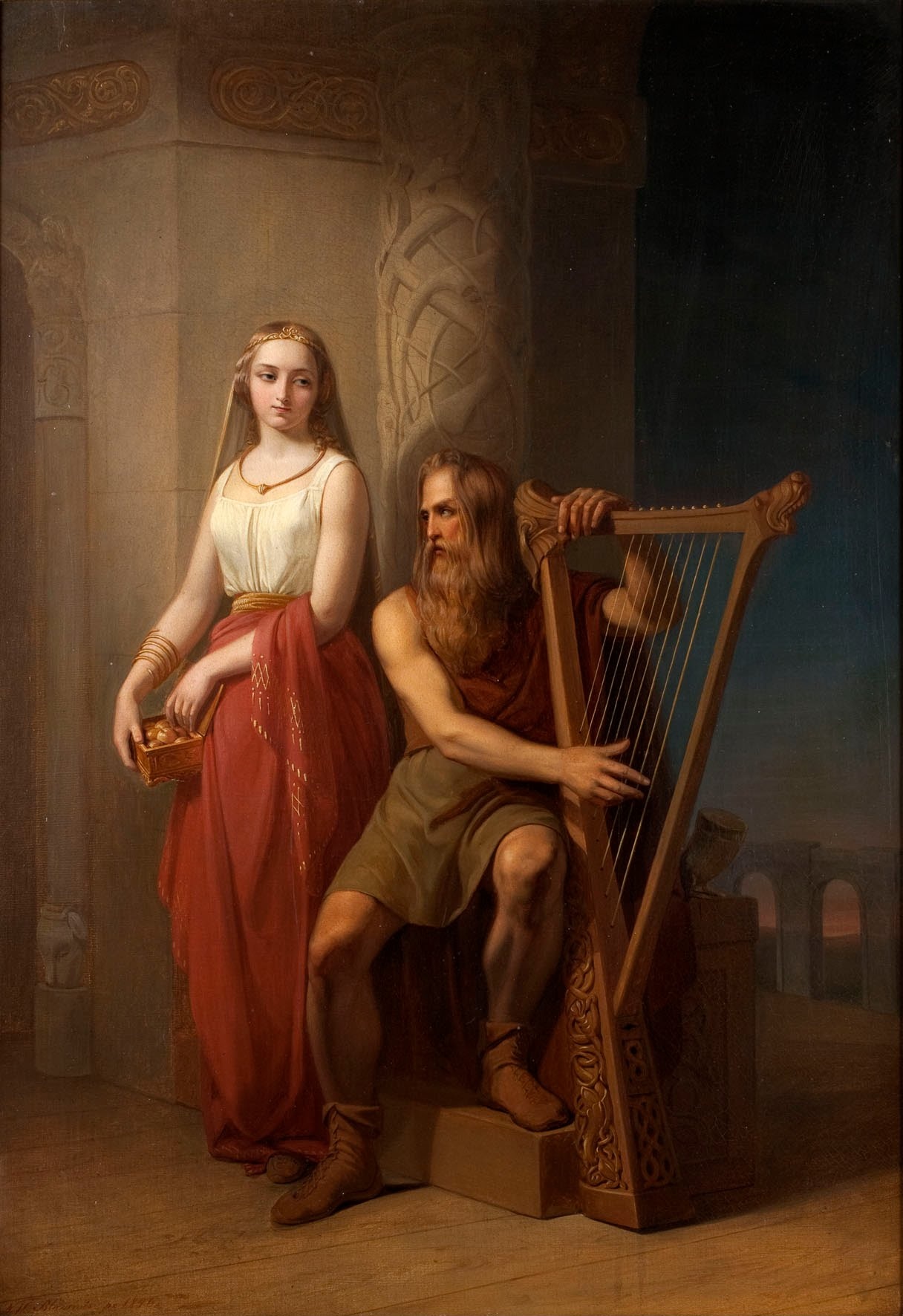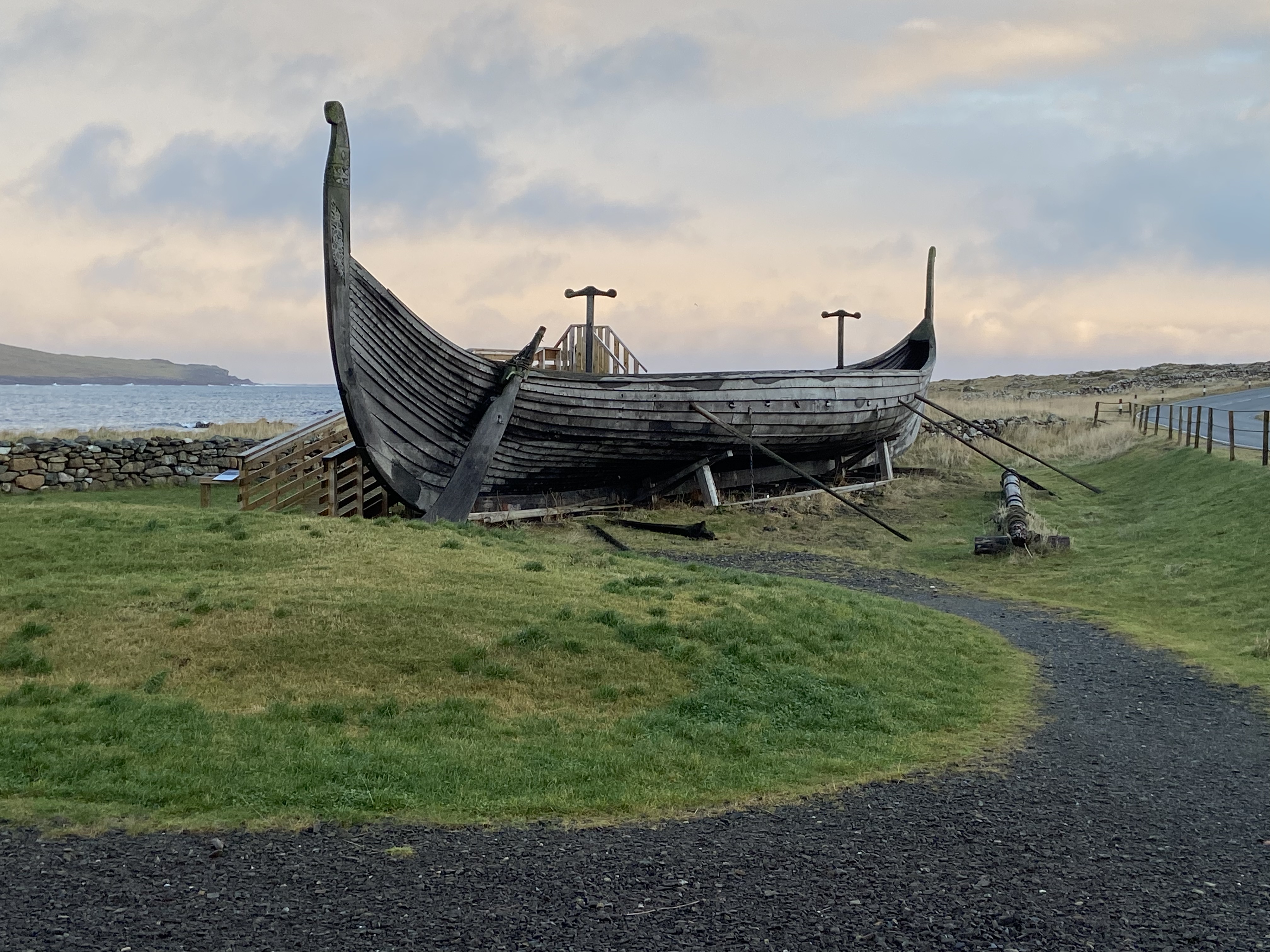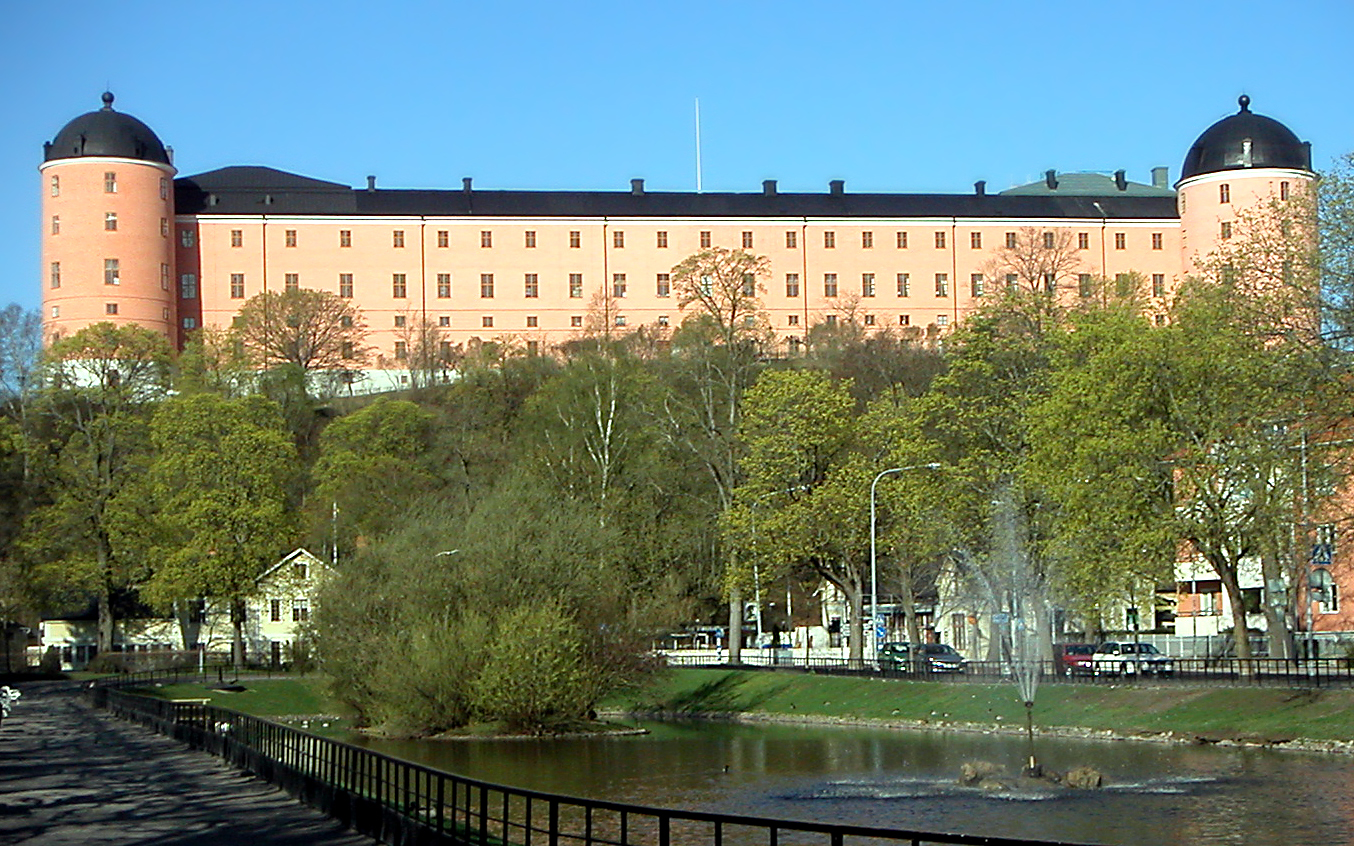|
ûjû°û¯û°lfr Of Hvinir
ûjû°û¯û°lfr û°r Hvini (; anglicized as Thjû°dû°lf of Hvinir or Thiodolf; fl. late 9thãearly 10th c. AD), was a Norwegian skald, said to have been one of the court-poets of the Norwegian king Harald Fairhair. His name suggests that he was from the region of Hvinir ( Kvinesdal). Two skaldic poems, '' Haustlú¨ng'' (Autumn-long) and '' Ynglingatal'' (Enumeration of the Ynglingar), are generally attributed to him. Saga account According to Heimskringla, he fostered Harald's sons Sigurd Hrisi, Halfdan Long-Leg, GudrûÑd the Radiant, Ragnvald Rettilbein. Works Both ''Haustlú¨ng'' and ''Ynglingatal'' are ascribed to ûjû°û¯û°lfr of Hvinir from a relatively early period. They were preserved, along with some of his other verses, by the 13th-century Icelandic writer Snorri Sturluson in the '' Prose Edda''. A third poem, '' HrafnsmûÀl'', is also attributed to him by Snorri, although scholars rather think that it was composed by another of Harald Fairhair's court-poets named ... [...More Info...] [...Related Items...] OR: [Wikipedia] [Google] [Baidu] |
Skald
A skald, or skûÀld (Old Norse: ; , meaning "poet"), is one of the often named poets who composed skaldic poetry, one of the two kinds of Old Norse poetry in alliterative verse, the other being Eddic poetry. Skaldic poems were traditionally composed to honor kings, but were sometimes Extemporaneous speaking, ex tempore. They include both extended works and single verses (''LausavûÙsa, lausavûÙsur''). They are characteristically more ornate in form and diction than eddic poems, employing many kennings, which require some knowledge of Norse mythology, and heiti, which are formal nouns used in place of more prosaic synonyms. ''Drû°ttkvûÎtt'' metre (poetry), metre is a type of skaldic verse form that most often use internal rhyme and alliteration. More than 5,500 skaldic verses have survived, preserved in more than 700 manuscripts, including in several sagas and in Snorri Sturluson's ''Prose Edda'', a handbook of skaldic composition that led to a revival of the art. Many of these vers ... [...More Info...] [...Related Items...] OR: [Wikipedia] [Google] [Baidu] |
Ragnvald Rettilbein
Ragnvald, RûÑgnvald or Rognvald or RûÎgnald is an Old Norse name (Old Norse ''Rú¨gnvaldr'', modern Icelandic ''RûÑgnvaldur''; in Old English ''Regenweald'' and in Old Irish, Middle Irish ''Ragnall''). Notable people with the name include: * Ragnvald HeidumhûÎre (9th century), King of Vestfold * Rognvald Eysteinsson (fl. late 9th century), Jarl of Mû¡re * Ragnall ua ûmair (died 921), King of York * Ragnall Guthfrithson, co-King of York, 943-44 * Ragnall mac Gofraid (died 1004/1005), King of the Isles * Rogvolod (mid-10th century), Prince of Polotsk * Ragnvald Ingvarsson (10th century), officer of the Varangian Guard * Ragnvald Ulfsson the Old, jarl of Vastergotland and possibly father of King Stenkil of Sweden * Rognvald Brusason (died c. 1046), Jarl of Orkney * Ragnvald Ingesson (late 11th century), only known son and heir of King Inge I of Sweden * Ragnvald KnaphûÑvde (early 12th century), King of Sweden * RûÑgnvald Kali Kolsson (12th century), Norwegian saint and jarl of part of ... [...More Info...] [...Related Items...] OR: [Wikipedia] [Google] [Baidu] |
ûsir
ûsir (Old Norse; singular: ) or áse (Old English; singular: ) are deities, gods in Germanic paganism. In Old Nordic religion and Nordic mythology, mythology, the precise meaning of the term "" is debated, as it can refer either to the gods in general or specifically to one of the main families of gods, in contrast to the Vanir, with whom the ûsir ûsirãVanir War, waged war, ultimately leading to a joining of the families. The term can further be applied to local gods that were believed to live in specific features in the landscape - such as fells. The Old English medical text Wiû¯ fûÎrstice refers to the áse, along with elves, as harmful beings that could cause a stabbing pain, although exactly how they were conceived of by the author of the text is unclear. and its cognate forms feature in many Germanic names, such as Oswald (given name), Oswald and , and in some place-names in Norway and Sweden. The ûsir further likely give their name to the Ansuz (rune), A-rune, atte ... [...More Info...] [...Related Items...] OR: [Wikipedia] [Google] [Baidu] |
Iû¯unn
In Norse mythology, Iû¯unn is a goddess associated with apples and youth. Iû¯unn is attested in the ''Poetic Edda'', compiled in the 13th century from earlier traditional sources, and the ''Prose Edda'', written in the 13th century by Snorri Sturluson. In both sources, she is described as the wife of the skaldic god Bragi, and in the ''Prose Edda'', also as a keeper of apples and granter of eternal youthfulness. The ''Prose Edda'' relates how Loki was once forced by the jûÑtunn ûjazi to lure Iû¯unn out of Asgard and into a wood with the promise of apples even fairer than her own. ûjazi, in the form of an eagle, abducts Iû¯unn from the wood, bearing her off to his home. Iû¯unn's absence causes the gods to grow old and grey, and they realize that Loki is responsible for her disappearance. Under duress, Loki promises to bring her back and, setting out in the form of a falcon, eventually finds her alone at ûjazi's home. He turns her into a nut and flies back toward Asgard. W ... [...More Info...] [...Related Items...] OR: [Wikipedia] [Google] [Baidu] |
Loki
Loki is a ûsir, god in Norse mythology. He is the son of FûÀrbauti (a jûÑtunn) and Laufey (mythology), Laufey (a goddess), and the brother of Helblindi and Bû§leistr. Loki is married to the goddess Sigyn and they have two sons, Narfi (son of Loki), Narfi or Nari and VûÀli (son of Loki), VûÀli. By the jûÑtunn Angrboû¯a, Loki is the father of Hel (being), Hel, the wolf Fenrir and the world serpent JûÑrmungandr. In the form of a mare, Loki was impregnated by the stallion Svaû¯ilfari and gave birth to the eight-legged horse Sleipnir. Like other gods, Loki is a Shapeshifting, shape shifter and in separate sources appears in the form of a salmon, a mare, a Fly (animal), fly, and possibly an elderly woman named ûûÑkk (Old Norse 'thanks'). While sometimes friendly with the gods, Loki engineers the death of the beloved god Baldr. For this, Odin's specially engendered son VûÀli binds Loki with the entrails of one of his sons, where he writhes in pain. In the ''Prose Edda'', this son, Nar ... [...More Info...] [...Related Items...] OR: [Wikipedia] [Google] [Baidu] |
Ynglinga Saga
''Ynglinga saga'' ( ) is a Kings' sagas, Kings' saga, originally written in Old Norse by the Icelanders, Icelandic poet and historian Snorri Sturluson about 1225. It is the first section of his ''Heimskringla''. It was first translated into English and published in 1844 by Samuel Laing (travel writer), Samuel Laing. Snorri Sturluson based his work on an earlier ''Ynglingatal'' which is attributed to the Norwegian 9th-century skald ûjû°û¯û°lfr of Hvinir, and which also appears in ''Historia NorvegiûÎ, Historia Norwegiae''. It tells the most ancient part of the story of the House of Ynglings (''Scylfings'' in ''Beowulf''). Snorri described the descent of the kings of Norway from this List of Swedish monarchs, royal house of Sweden. ''Ynglinga saga'' is the first part of Snorri's history of the ancient Norse kings, the ''Heimskringla.'' Interwoven in this narrative are references to important historical events. The saga deals with the arrival of the Norse gods to Scandinavia and ... [...More Info...] [...Related Items...] OR: [Wikipedia] [Google] [Baidu] |
Uppsala
Uppsala ( ; ; archaically spelled ''Upsala'') is the capital of Uppsala County and the List of urban areas in Sweden by population, fourth-largest city in Sweden, after Stockholm, Gothenburg, and MalmûÑ. It had 177,074 inhabitants in 2019. Located north of the capital Stockholm, it is also the seat of Uppsala Municipality. Since 1164, Uppsala has been the ecclesiology, ecclesiastical centre of Sweden, being the seat of the Archbishop of Uppsala, Archbishop of the Church of Sweden. Uppsala is home to Scandinavia's largest cathedral ã Uppsala Cathedral, which was the frequent site of the coronation of the Swedish monarch until the late 19th century. Uppsala Castle, built by King Gustav I of Sweden, Gustav Vasa, served as one of the royal residences of the Swedish monarchs, and was expanded several times over its history, making Uppsala the secondary capital of Sweden during its Swedish Empire, greatest extent. Today, it serves as the residence of the Governor of Uppsala County ... [...More Info...] [...Related Items...] OR: [Wikipedia] [Google] [Baidu] |
Oslofjord
The Oslofjord (, ; ) is an inlet in southeastern Norway. The fjord begins at the small village of Bonn in Frogn, Frogn Municipality and stretching northwards to the city of Oslo, and then curving to the east and then south again. It then flows south to an imaginary line running between the Torbjû¡rnskjûÎr Lighthouse and FûÎrder Lighthouse where it becomes part of the Skagerrak strait. The Skagerrak connects the North Sea and the Kattegat sea area, which leads to the Baltic Sea. The Oslofjord is not a fjord in the geological sense, butãin the Norwegian language, the term can refer to a wide range of waterways including inlets such as this one. The bay is divided into the inner () and Ytre Oslofjord, outer () Oslofjord, separated by the long by wide Drû¡bak Sound. The innermost part is known as Bunnefjorden. Fjord From 1624 until 1925 the name of the fjord was (or ), since Christiania was the name of the capital during this period (the ''Ch'' was changed to a ''K'' in 1877) ... [...More Info...] [...Related Items...] OR: [Wikipedia] [Google] [Baidu] |
Vestfold
Vestfold () is a county and a current electoral district in Norway. Located on the western shore of the Oslofjord, it borders Buskerud and Telemark counties. The county administration is located in Tû¡nsberg, Norway's oldest city, and the largest city is Sandefjord. With the exception of the city-county of Oslo, Vestfold is the smallest county in Norway by area. Vestfold is located west of the Oslofjord, as the name indicates. It includes many smaller, but well-known towns in Norway, such as Holmestrand, Horten, û sgûËrdstrand, Tû¡nsberg, Sandefjord, Larvik and Stavern; these towns run from Oslo in an almost constant belt of urban areas along the coast, ending in Grenland in neighbouring county Telemark. The river NumedalslûËgen runs through the county. Many islands are located at the coast. Vestfold is mostly dominated by lowland and is among the best agricultural areas of Norway. Winters last about three months, while pleasant summer temperatures last from May to Septe ... [...More Info...] [...Related Items...] OR: [Wikipedia] [Google] [Baidu] |
Petty Kingdom
A petty kingdom is a kingdom described as minor or "petty" (from the French 'petit' meaning small) by contrast to an empire or unified kingdom that either preceded or succeeded it (e.g. the numerous kingdoms of Anglo-Saxon England unified into the Kingdom of England in the 10th century, or the numerous Gaelic kingdoms of Ireland as the Kingdom of Ireland in the 16th century). Alternatively, a petty kingdom would be a minor kingdom in the immediate vicinity of larger kingdoms, such as the medieval Kingdom of Mann and the Isles relative to the kingdoms of Scotland or England or the Viking kingdoms of Scandinavia. In the parallel mainland Southeast Asian political model, petty kingdoms were known as ''mueang''. By the European High Middle Ages, many post-Roman Early Middle Ages petty kingdoms had evolved into principalities, grand duchies, or duchies. By the European Early Modern era, many of these principalities had been mediatized into larger monarchies, but the ruling fa ... [...More Info...] [...Related Items...] OR: [Wikipedia] [Google] [Baidu] |
Ragnvald HeidumhûÎre
Ragnvald HeidumhûÎre (or Rognvald) was a semi-historical petty king or chieftain of Vestfold in what is today Norway in the 9th century, according to '' Ynglingatal'' and to ''Ynglinga saga'' in '' Heimskringla''. He was apparently a member of the Yngling clan (mentioned in later Norse and Anglo-Saxon literature, such as ''Beowulf''). His name ''Heiû¯umhûÎri'' could be translated as ''highly honoured'' Edited by Tore Frost. Sandefjordsmuseene, 1997. . Page 56 His greatest contribution to posterity was that he asked the to ... [...More Info...] [...Related Items...] OR: [Wikipedia] [Google] [Baidu] |







